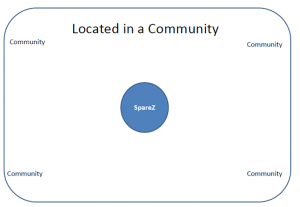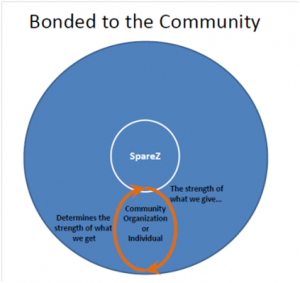Albert Einstein is famously quoted to say, “The definition of insanity is doing the same thing over and over again, expecting a different result”. The quote teaches us that we need to change what we do in order to create different results. The logical conclusion is that in order to be successful in the future we must do something new, that is, do things that have never been done before. In fact, the logical conclusion is wrong; we must do things differently, but that is not just a matter of doing things new, but also finding the things which were abandoned over time, but are again relevant to the present and the future.
The two-decade period from 1960 to 1980 can easily be considered the “Golden Age of Bowling”. Within this two-decade period the number of domestic bowling centers peaked; league membership peaked; the average games per lane per year peaked, and awareness of bowling as a sport also peaked. Unique cultural trends of the period created an environment, allowing for the explosive growth of Bowling. Although cultural trends have shifted in the three decades since the end of the Golden Age of Bowling, there are certain aspects of that era which are relevant to the present and can be beneficially re-introduced into the operation of bowling-based businesses.
The advent of the suburban bowling center in the 1950’s brought into existence the Bowling Proprietor ownership model. The Proprietor was clearly an owner/operator who was generally assisted in entering the business by one of the major manufacturers. The newly created Proprietorship Model has led to possibly the most successful form of American family business, the bowling center. Proprietors typically were not experienced, astute business people. What they lacked in business knowledge and experience, they made up for with diligence and persistence. Two aspects of the Golden Age Proprietor Model remain relevant although underdeveloped today. The first is that the Proprietor knew his (her) customer. He walked the concourse, bowling areas and bars, greeting bowlers. The bowling center was the Proprietor’s business, but it was also a special place where the Bowler felt welcome. Typically, the Proprietor led the welcoming effort. The bowling center became a community which recognized and rewarded those who routinely visited. The second relevant aspect is that the Proprietor worked diligently to bond the bowling business to the external communities it served. The Proprietor was known throughout the community. He invested his time, talent and treasure to strengthen the community and therefore strengthen his business.
Over the years, the Proprietorship model has given way to the Investor Owner/Manager Operator model. Multi-unit operators are by design management driven. Increasingly, single centers are becoming investor-owned, employing a manager operator. Even within continuing family businesses, the sense of Proprietorship is giving way to the role of management. Bonds to the community have weakened or in some cases have become non-existent. The exception which proves the case is the traditional small center bowling business. Small centers have largely become the last bastions of community-centric bowling businesses, but even small centers can benefit from a move to “bonding to the community”.
Community Bonding seeks to establish three wins:
- The Business Wins
- The Community Wins
- The Staff Wins
The business wins when links to the community provide direct activity in the center. And it wins when the bonding creates heightened interest in the center on the part of members of the community.
The community wins when the bond to the business provides service to segments of the community. The community wins when the efforts of community organizations are highlighted within the center. The community also wins when the experience of participating in an event in the center creates a feeling of community on the part of individual participants. Frequently, a participant finishing a community-based experience in the bowling center states how much fun it was and his desire to do it again. Bowling operators tend to think the participant is solely speaking of the bowling experience, the cleanliness of the center, the friendliness of the staff and the operation of the equipment. All vitally important to a high-quality experience, but they are really saying that for a couple of hours they had a community experience within the bowling center and they enjoyed it very much. The event strengthens the sense of community.
The staff wins when they are engaged with the community. They win when they receive recognition for their service to the community. And they win on a personal level when they provide service to the community.
The three wins define the concept of “bonding to the community”. Creating bonding is then a matter over repetition. A business without any bonds to the community can at best say that it is “located in the community”.
A business that has established a few bonds to the community can state they are a “part of the community”.
The business that is truly bonded to the community, where there is no white space between the business and the community, has created a powerful engine to drive improvement in both the business and the community.
Bonding to the Community is therefore a matter of creating a multitude of individual bonds to community organizations and individuals within the community. Two points critical to executing Community Bonding are:
- The strength of what the business gives to the community determines the strength of what it gets from the community.
- The effort of Bonding to the Community must involve the entire staff. Management and ownership must take a leading role, but for community bonding to occur, the entire staff must be involved. Bonding to the Community is an “all in” concept.
The simple worksheet below allows the center to begin to map the bonds it has and needs in order to become bonded to the community.
Community is where support is the strongest and where the need is the greatest. Community Bonding is not only the best philosophy for a bowling business, it is the right philosophy for a bowling business. There are many tools to help in the process and the opportunity for industry support is great, but the best news of all is that every operator of a bowling-based business can start today and see immediate, positive results.
Joe Schumacker
February 2013






 Posted in
Posted in